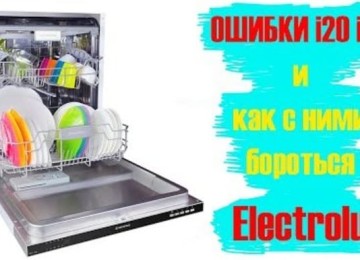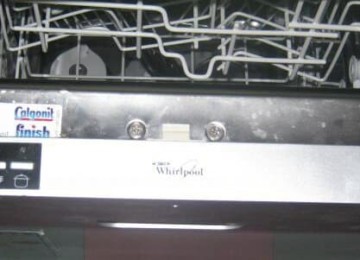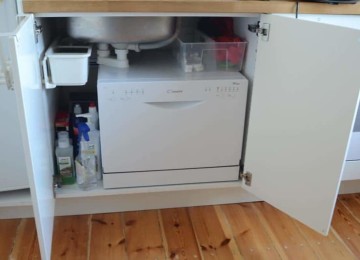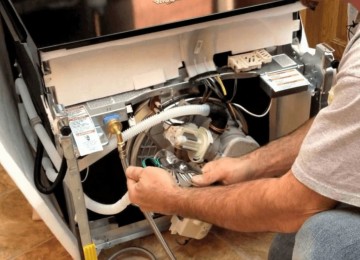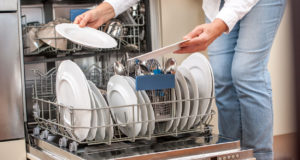 A dishwasher is a piece of equipment that no busy housewife can do without. True, not everyone knows how to use a dishwasher.
A dishwasher is a piece of equipment that no busy housewife can do without. True, not everyone knows how to use a dishwasher.
The fact is that the instructions are written in a foreign language or in very complex text, as a result of which it is very difficult to understand how the design works. Almost all buyers from Russia face this problem. For this reason, this technology is not particularly popular in this country.
In this article we will try to tell you as much as possible about the dishwasher, its operation, and rules of use.
Types of dishwashers
Dishwashers differ from each other in their design features, appearance, functions and energy consumption. These kitchen units fit well into the interior of the room if they have the same color as the kitchen unit.It is important to choose a technique that is right for you.
There are three main types of dishwashers:
- Compact. These models will fit well into the interior of a small room. They take up little space, so you can install the equipment in any place convenient for you. The device has both advantages and disadvantages.
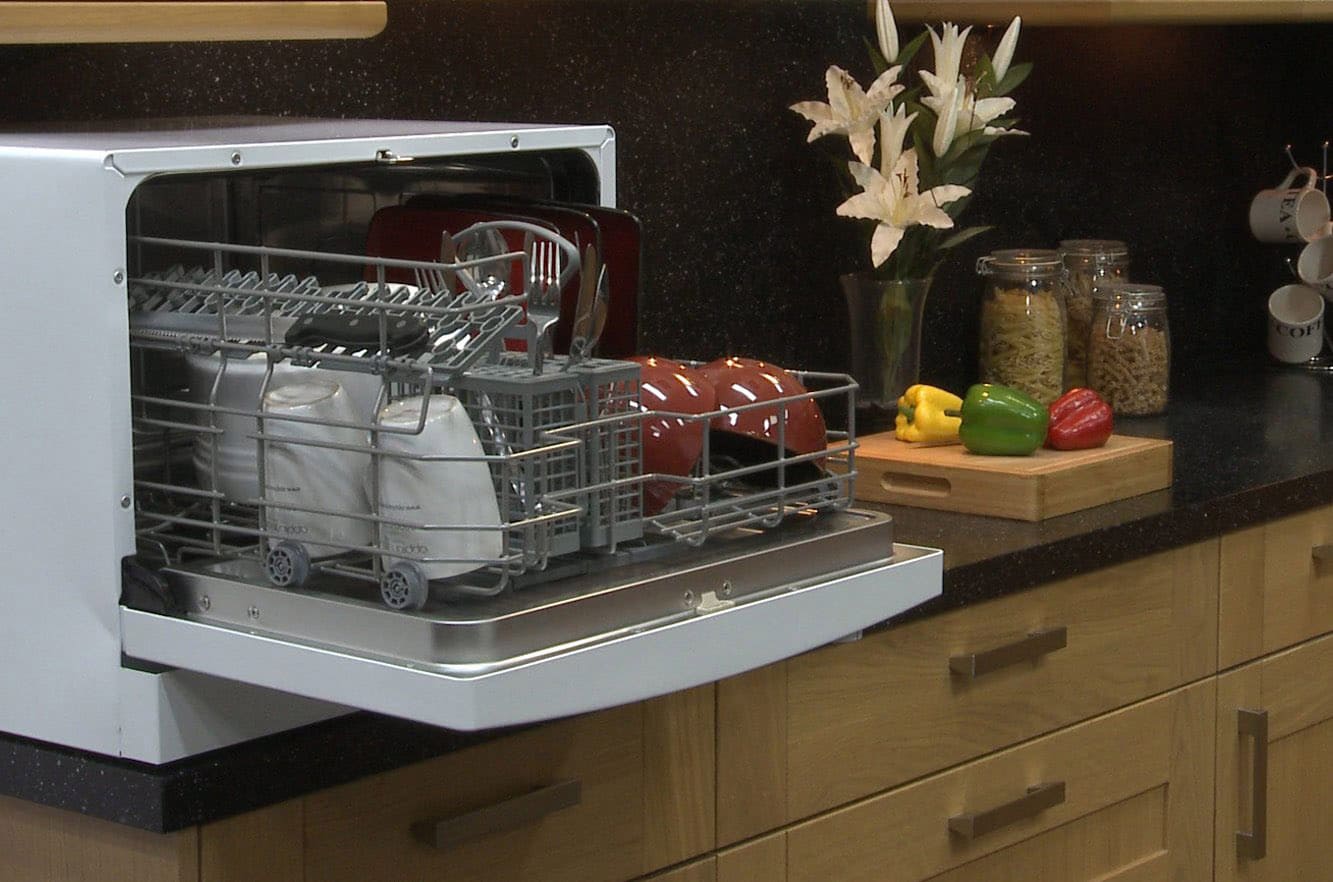
Advantages:
- low cost;
- consumes a small amount of electricity;
- takes up little space.
Flaws:
- does not wash away all contaminants;
- Do not wash large dishes (pots, frying pans);
- few functions.
- Narrow. This dishwasher model is compact, as it easily fits into the kitchen set. You can wash 8-10 sets of dishes in it. There are also models that can be placed separately from the kitchen unit.
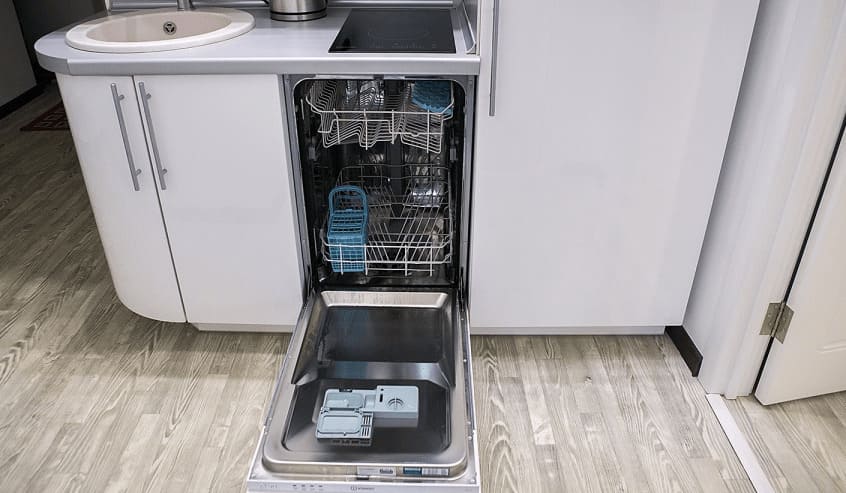
Pros:
- ergonomic design;
- large selection of assortment;
- takes up little space.
Minuses:
- a lot of electricity is wasted;
- You can’t wash large dishes;
- short service life.
- Standard. These dishwasher models are built into kitchen units. They have the largest capacity among other dishwashers. This technique can wash 10-12 sets of dishes. They differ in the degree of sophistication: the more functions, the more expensive the equipment.
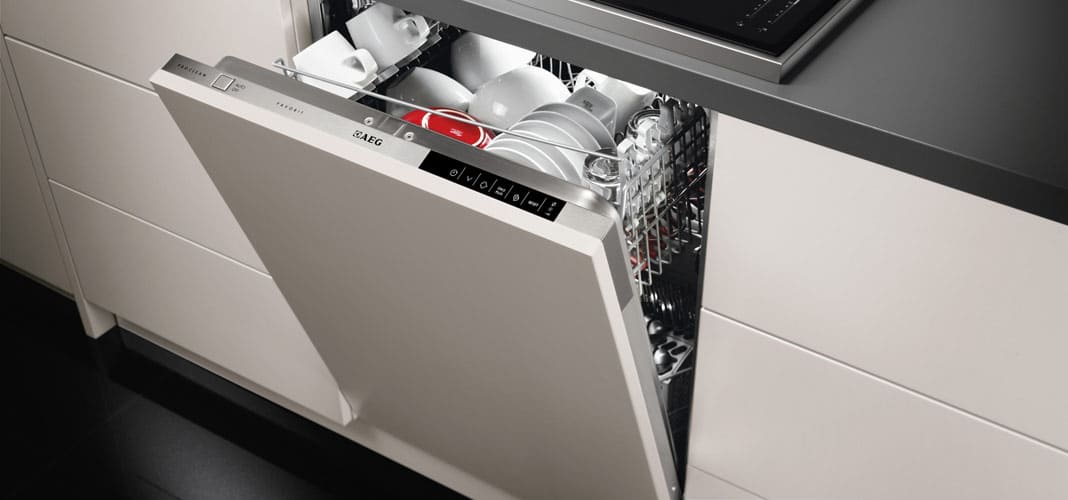
Advantages:
- completely clean the dishes from dirt and stains;
- have a large capacity;
- can wash large dishes;
- multifunctionality;
- stylish design.
Flaws:
- high price;
- take up a lot of space;
- waste a lot of electricity.
Basic rules for using a dishwasher
Everyone wants a technical device to operate efficiently and for a long time, but to achieve this result, you need to use the dishwasher correctly. Each dishwasher is unique, so it is worth reading the instructions, which contain tips on operating the equipment.
The main rules that must be followed when using technology:
- In order for your dishwasher to clean dishes perfectly, you need to remove any remaining food from dirty dishes. If this is not done, then there is a high probability that some kind of contamination will remain on the vessel.
- Large vessels (a frying pan or a saucepan) are placed down, small dishes (a cup or plate) are placed at the top.
- Devices must be placed in a special compartment. It is recommended to clean knives and forks with spoons separately from each other.
- Do not overload the dishwasher with dishes. If you do this constantly, the service life of this equipment will be reduced by 2 times.
- Clean your dishwasher regularly to remove scale and dirt. This can be done with a damp cloth or sponge. Deep clogs are more difficult to clear.
- There are special sections inside the dishwasher where dishes are inserted. Do not stack dishes on top of each other, as they will be difficult to wash. It is recommended to place cups and deep plates upside down.
- The equipment must be fully loaded.
Preparing the dishwasher for use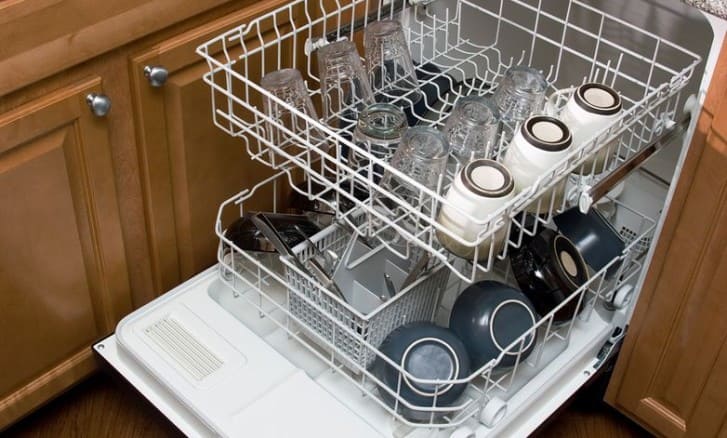
There are a large number of different types of dishwashers, differing only in brand and functions. Preparing a technical device for operation is the same for all types of dishwashers.
Turning on the machine for the first time
Appliance manufacturers recommend that their customers turn on the dishwasher for the first time without loading dishes. There are 2 main reasons for this:
- When workers assembled the structure, their fingers were probably covered in greasy oil or dust, which means the dishwasher was dirty from the inside. It is quite problematic to clean these stains with a sponge, for this reason it is recommended to turn on the dishwasher empty so that all crevices and hard-to-reach places are cleaned of dirt.
- The second reason for this recommendation is to check the performance of the equipment. That is, the owner of the device sees how the dishwasher works and views the stages of the work process.
In some dishwashers, as a bonus, the manufacturer gives a small sample of powder or detergent for the first run. If detergents are not included in the kit, you must purchase them yourself. The next paragraph describes the main types of household chemicals that this technique uses. Before starting, you need to adjust the water hardness level.
Types of household chemicals
Without chemicals, the dishwasher will not thoroughly wash dirty dishes. The means necessary for the operation of the equipment are described in the instructions, sometimes written on the dishwasher itself:
- Detergents. These include any kind of powders or gels. They clean the dishes from dirt. It is more profitable to purchase powder than capsules with a cleaning agent.
- Regenerating salt. It regulates and reduces water hardness.
 In addition, the product destroys some clogs and scale in the dishwasher.
In addition, the product destroys some clogs and scale in the dishwasher. - Rinse aid. This product gives dishes a beautiful shine.If you wash glass or crystal dishes in the machine with rinse aid, the dishes will shine with a mesmerizing shine.
Rules for loading dishes
Dishes must be loaded into the dishwasher according to the rules so that they are clean and beautiful. If you incorrectly arrange cups, plates or other dishes, then there is a high probability that they will not be cleaned of greasy stains and other dirt.
Lower compartment of the dishwasher. Large dishes are placed in this sector, which must stand in an upright position. The following dishes can be placed here: a frying pan, a saucepan, a large plate, a baking sheet, and so on. In addition, this compartment is washed with greater pressure than the upper one, so glass and crystal dishes should not be washed here under any circumstances. Due to the high temperature and high level of water hardness, dishes made of these materials can crack. Important: When washing large dishes, the top compartment should be removed from the dishwasher, as it may interfere with loading large dishes.
Top compartment of the dishwasher
. Small dishes, such as cups, saucers, etc., are placed here. Saucers are inserted sideways into special holes. Deep containers, such as cups, should be placed upside down. In addition, a special compartment for cutlery is placed here. Compartment for cutlery 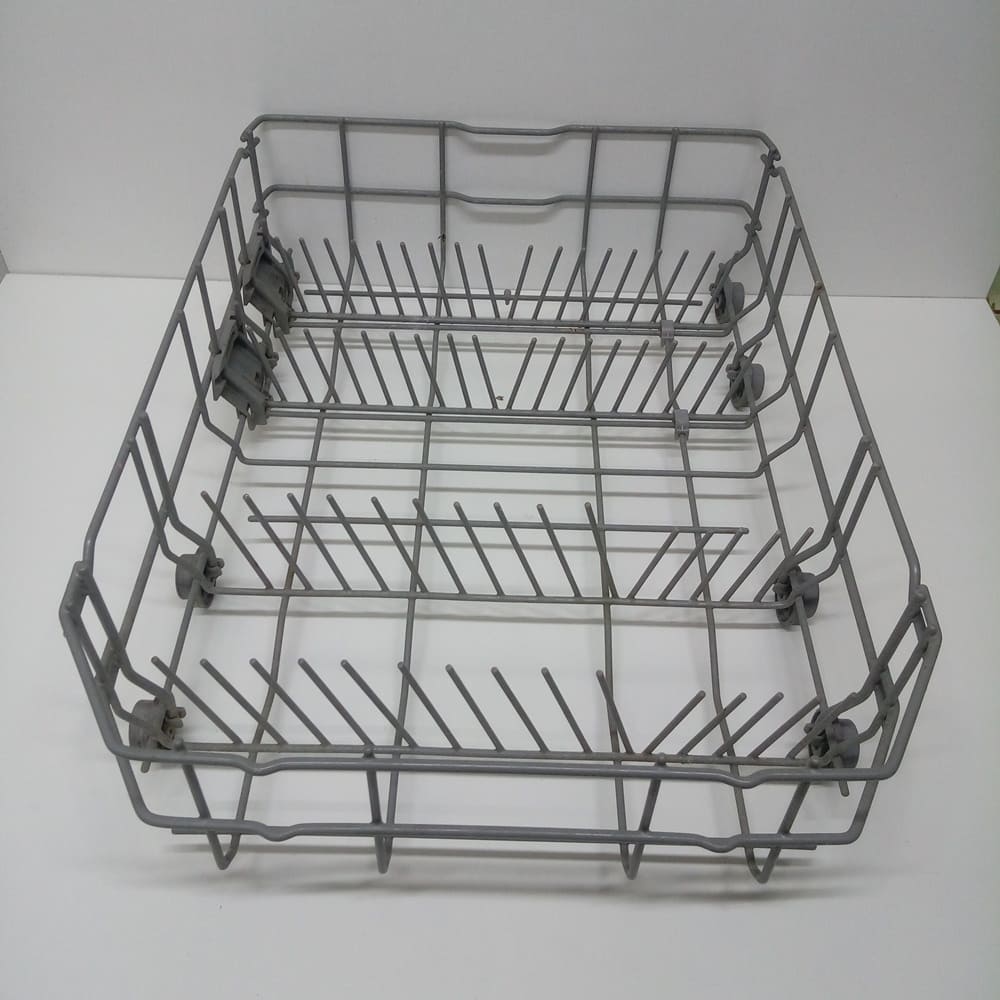
. Knives, forks, and spoons are placed here. Not every dishwasher has this tray. Cutlery should be placed vertically upwards if there is a special basket for these utensils. If not, they are simply placed at the bottom of the top compartment of the dishwasher.If you wash glass or crystal dishes in a machine with rinse aid, the dishes will shine with a mesmerizing shine.Rules for loading dishes
Dishes must be loaded into the dishwasher according to the rules to keep them clean and beautiful. If you place cups, plates or other utensils incorrectly, there is a high probability that they will not be cleaned of grease stains and other contaminants.
Bottom compartment of the dishwasher.
Large dishes are placed in this sector and should be in an upright position. You can place the following utensils here: a frying pan, a saucepan, a large plate, a baking sheet, and so on. In addition, this compartment is washed with greater pressure than the upper one, so glass and crystal dishes should absolutely not be washed here. Due to high temperatures and high levels of water hardness, dishes made from these materials may crack.
Important: when washing large dishes, the top compartment should be removed from the dishwasher, as it may interfere with loading bulky dishes.
Dishwasher top compartment
. Small dishes are placed here, such as cups, saucers, and so on. The saucers are inserted sideways into special holes. Deep containers, such as cups, should be placed upside down. In addition, a special compartment for cutlery is placed here.
Cutlery compartment
. Knives, forks, spoons are inserted here. Not every dishwasher has this tray. Cutlery should be placed vertically upward if there is a special basket for these cutlery. If not, then they are simply placed at the bottom of the top compartment of the dishwasher.
It is important to load dishes into the machine correctly, since not only the cleanliness of the dishes, but also the performance of the equipment depends on this. If the dishes are not stacked correctly, then individual mechanisms of this equipment can quickly become unusable or simply break.
What can't be washed in the dishwasher
A modern dishwasher can wash any utensil: from a simple fork to a large frying pan. True, not every material from which the dishes are made can withstand high temperatures, hot drying, and detergents that affect the dishes.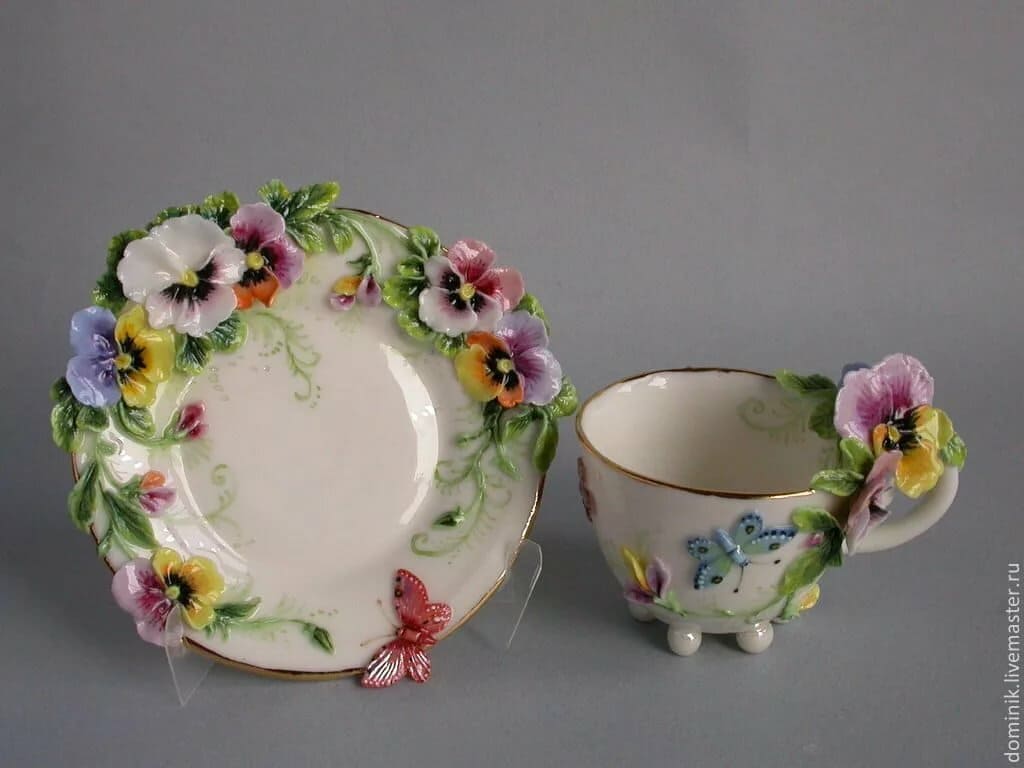
Tree
If you don't plan to throw the wooden item in the trash, don't put it in the dishwasher. The fact is that wood, when in contact with water, begins to greatly increase in size.
Then, after thorough drying, it begins to decrease in size, but the structure of the fibers is already disrupted, as a result of which the surface of the wooden product becomes rough, uneven and ugly. In general, the product completely loses its original appearance; in addition, it is dangerous to eat from this product. For example, you put some unwashed fruit, vegetable or other food product in a wooden bowl. Germs will quickly spread in the cracks of a damaged product. And when you start eating, the same bacteria will enter your body.
You probably think that in a short time the tree will not have time to swell? If you think so, you are deeply mistaken. The tree begins to swell in ice water after 50 minutes, and in hot water in 15-20 minutes. Therefore, we strongly recommend that you do not load your dishwasher with wooden dishes.
Plastic
It is not recommended to load plastic dishes into the washing machine, even if they have increased heat resistance. The fact is that even with such resistance, there is a possibility that the plastic dishes will become deformed, as a result of which a hole will appear in it through which air will pass.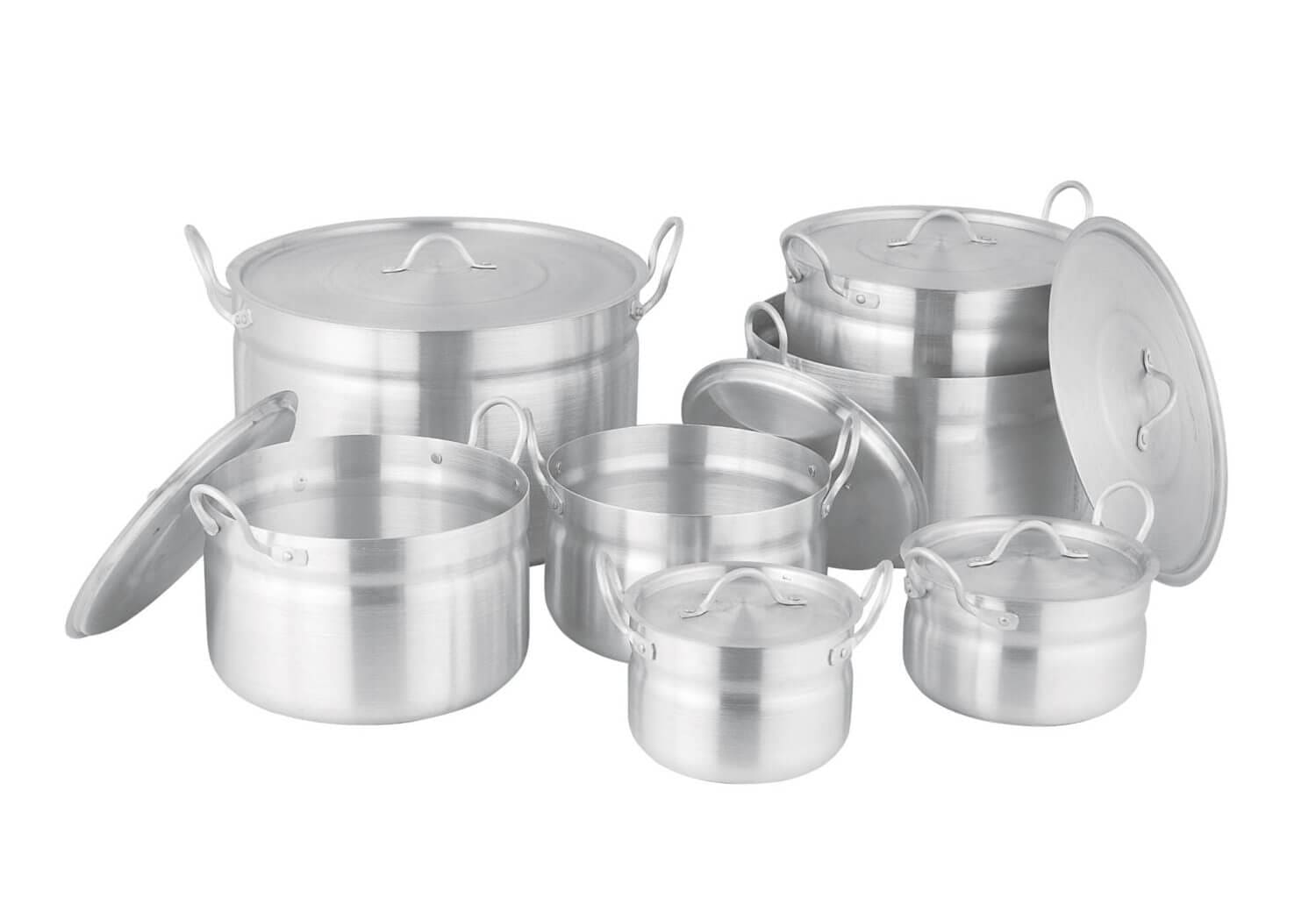
It is strictly forbidden to load disposable dishes into a dishwashing machine, as under the influence of high temperature and chemicals they will turn into mush. Liquid plastic is difficult to clean from the inner walls of the device.
Porcelain
Porcelain is a type of brittle material. Therefore, porcelain dishes should not be placed in the dishwasher. When exposed to high temperatures, the product will become covered with specks, and the colorful lining will be washed off. When drying, the product may break into small pieces. Therefore, porcelain dishes can only be washed if they have thick walls and a gentle dishwashing mode is used.
Crystal
Crystal dishes are very beautiful, however, it is not recommended to wash this type of product in a dishwasher, as they are susceptible to temperature changes. Such beautiful and expensive ones can be washed in the upper compartment of the dishwasher in a gentle cycle. If you violate this recommendation, the crystal glassware will break into small fragments.
Different types of metals
Products made from certain types of metals cannot be washed as usual. For example, it is not recommended to wash silver dishes in a dishwasher, since when interacting with hot water and chemicals, silver items begin to tarnish, lose their original appearance and become covered with a black coating.You should not wash silver dishes together with stainless steel dishes, since the second type of products adversely affects the coating of the silver dish.
It is also not recommended to wash items made from shiny metals (copper, bronze, tin) in a dishwasher, as they begin to lose their original shine.
Aluminum cookware should also not be washed in the dishwasher. The fact is that the material from which the product is made reacts very well with other chemical elements. Usually, when people wash dishes, they do not notice this reaction, because the product is covered with a special protective film. But in the dishwasher, this film can completely dissolve, as a result of which the aluminum cookware will become covered with a black coating and will be unusable.
Cast iron cookware cannot be washed in a dishwashing machine, as after several washes the items will become coated and the appearance of the cookware will deteriorate.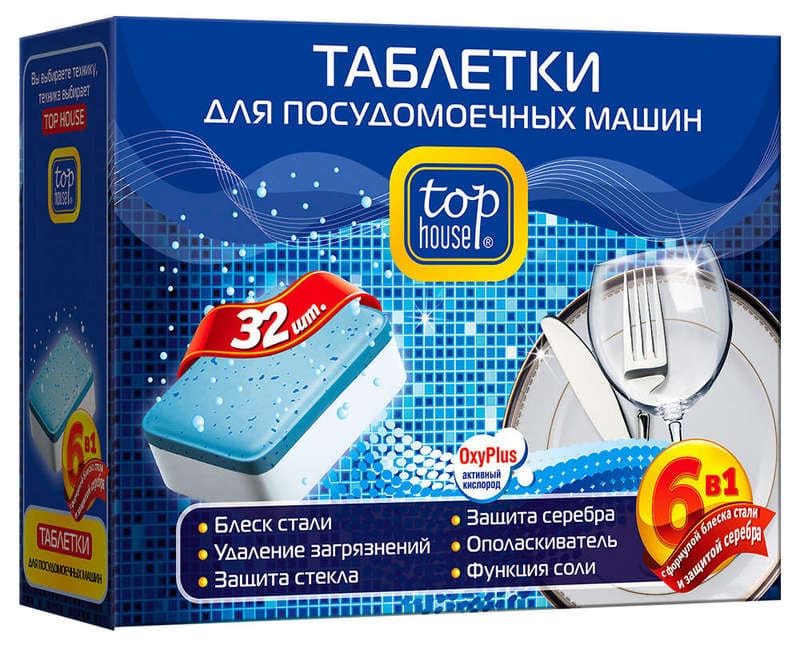
Metal knives and pottery
Such products should never be washed in the dishwasher, as when exposed to high temperatures, chemicals and water, the knives begin to lose their sharpness. After each wash you will have to sharpen your knife again. Therefore, it is recommended to wash this type of product in running water.
Clay products cannot be washed in a dishwasher, as the dishes will be deformed, clay particles will clog the internal mechanisms of the equipment, and the vessel itself will lose its original appearance.
Products required to operate the dishwasher
The dishwasher is always loaded with 3 types of chemicals: regenerating salt, rinse aid and detergent.
Regenerating salt
This product is necessary to soften the hardness of water. Water hardness affects the effectiveness of the detergent. The dishwasher has a special filter for regenerating salt. When water and this detergent interact, chemical elements begin to interact due to an exchange reaction, as a result of which the level of water hardness decreases and the effectiveness of the detergent increases.
- DetergentThere is a wide range of chemicals: from powder to gels. Although there are a lot of detergents, not all can be put into the dishwasher. For such equipment, special powders and tablets were invented that safely clean dishes without harming the technical device.
- If you pour regular detergent, soap or laundry detergent into the machine, the dishwasher will break down. It will be difficult to repair it, and the unit itself will not be able to work using such a detergent. The fact is that when using such products, a lot of foam appears, which interferes with the operation of the dishwasher and disables the internal mechanisms, resulting in breakdown.Rinse aid
- This chemical liquid is poured into a special compartment. Thanks to the rinse aid, the dishes are covered with a special protective shell. For this reason, there are no streaks or traces of water residue on the dishes. This property is very important when it comes to glass or crystal dishes.Selecting programs to work with
- The dishwasher always has special programs installed that determine the washing mode. The modes differ from each other in operating time, the amount of products used, and the washing stages.In addition, all modes have different water temperatures at which they clean the dishes from dirt.Basic washing modes:
- Auto. The machine itself determines the parameters (amount of product used, water hardness, operating time) at which it will wash dishes.
- Fast. Dishes are washed 2 times faster than normal. There are no 2 stages of dishwashing. It will not be able to remove heavy stains.
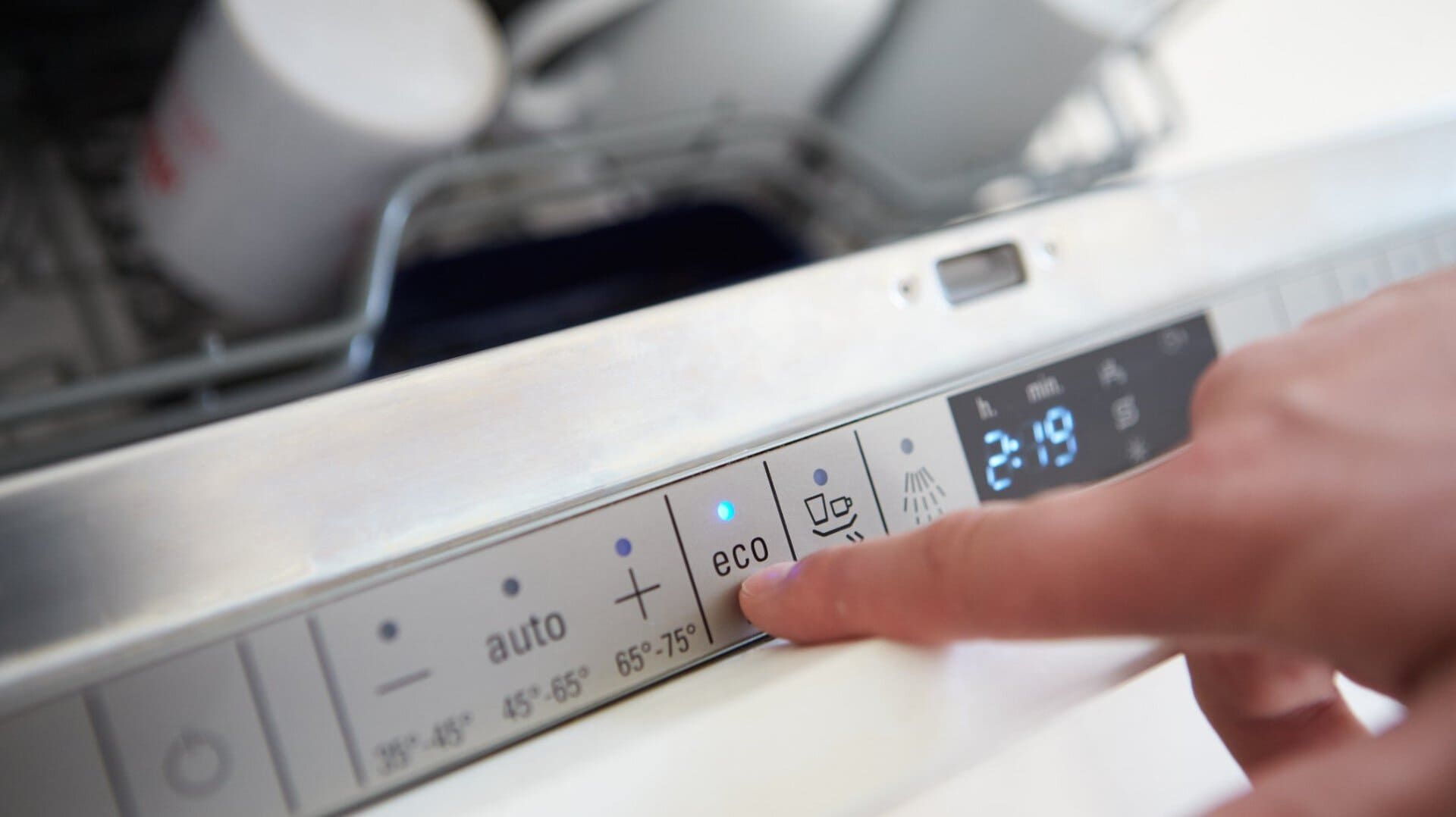
Delicate
. This mode is used to wash fragile dishes that are susceptible to temperature changes. Water temperature is from +30 to +40 degrees.
Economical
- . It uses less electricity, water and chemicals. Removes everything except greasy stains.
- Standard
- . Used for washing dishes that are not heavily soiled.
- Intensive
- . This mode increases the water pressure and the amount of detergent used to wash the most difficult stains from the surface of the dishes. The water has a temperature from +60 to +80 degrees.
- Dishwasher safety precautions
- You should handle the dishwasher with care, as carelessness can cause serious injury, for example, being burned or scalded.
- Safety precautions:
- The equipment must have special restrictions that will protect the owner of the device from the possibility of being scalded by boiling water or receiving more serious injury.
Before you start using the dishwasher, you need to load all types of necessary chemicals, check for damage or severe contamination inside the equipment. For example, if there is scale, the efficiency of a dishwashing machine can be significantly reduced, and if some mechanism is broken, the machine will not work at all.
When the device is working, you should absolutely not open the door from the machine.
The dishes need to be arranged so that they do not fall during washing, because if the dishes hit each other, they will break into small fragments.
If any fragments are found in the device, they must be removed.
Filters that are pulled out must be washed every 2 weeks, as they tend to become clogged.
While the technical device is operating, you must not remove any foreign bodies.






